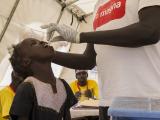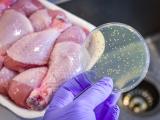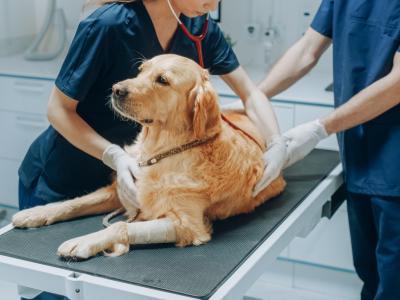Feb 25, 2005 (CIDRAP News) – The fight against avian flu is becoming more urgent and the price tag is climbing, experts said in the wake of the second international conference on the H5N1 flu.
As the conference concluded in Vietnam today, events elsewhere underscored the seriousness of the threat. Authorities confirmed at least one new human case of the illness, suspect a second case in the same family, and lack the lab capacity to quickly complete tests on a third suspected fatal case from a week ago, according to Bloomberg news service and the Associated Press (AP).
A 21-year-old man from Thai Binh province, Nguyen Sy Tuan, was admitted to the Tropical Disease Institute in Hanoi on Feb 22. He has tested positive for the H5N1 virus, said Pham Van Dui, director of the Thai Binh Preventive Medicine Center, in a story today from China's Xinhua news agency.
Tests on his 14-year-old sister, suspected of having H5N1, were pending today.
In the other suspected case, in which a man from the southern Mekong Delta province of Long An died last week, test results are not ready, Bloomberg news reported today.
The lag time in diagnosis underscores an issue that conference experts raised repeatedly this week: Southeast Asia desperately needs other countries to help finance the battle against bird flu.
Those speaking on behalf of Vietnam told representatives from more than 25 countries that Vietnam needs help diagnosing avian flu. The conference declaration also noted that regional animal health networks are insufficient for timely H5N1 detection or response, Bloomberg news reported.
Here's the problem by the numbers:
- $10 billion is the estimated cost of agricultural losses globally to date, said Samuel Jutzi, the Food and Agriculture Organization (FAO) director of animal production and health, in an Agence France-Presse (AFP) story today.
- $100 million is urgently needed "to strengthen animal health services and laboratories to improve virus detection," Jutzi said.
- Another several hundred million dollars would be needed to restock poultry and restructure the industry.
- Yet $18 million is how much money the global community has contributed to date, AFP noted.
- $3.8 million is how much Asia's richest man has just contributed to research efforts. Li K-shing, a Hong Kong man described by AFP as a "tycoon" in a story today, has pledged the money for a study by the French Pasteur Institute of Shanghai and the Joint Influenza Research Center of Shantou University Medical College in southern China.
Managing the endemic H5N1 flu strain in poultry will take more than money, authorities cautioned: It will require a massive cultural and agricultural shift.
Dr. Hans Troedsson, a World Health Organization representative in Vietnam, said that Asian countries "should make long-term investments to control infections in animals throughout the chain . . . implications of which would be major changes in husbandry practices. "We are providing technical and financial support [for] Vietnam and other regional countries, and coordinating with the UN Food and Agriculture Organization [FAO] to mobilize additional donor resources," Hans said.
FAO and the World Organization for Animal Health (OIE) arranged the 3-day conference this week in Ho Chi Minh City.
Vietnam and Thailand are considering whether and to what extent to vaccinate poultry, conference reports say. That may help provide the impetus needed for Thailand to fulfill a plan announced this week to vaccinate fighting cocks, free-range ducks, and backyard chickens. The plan does not call for vaccinating poultry raised for export.
Vaccinating carries weighty economic implications. However, the OIE will consider in May whether to change guidelines that would allow trade in vaccinated birds from avian flu–free zones, Reuters new service reported yesterday.
China credits an inactivated H5N2 vaccine with being very effective in battling avian flu, the Chinese news service Xinhua reported today.
Experts are still trying to understand and undermine the H5N1 virus.
"There are more questions than when we started the conference," said Patrick Deboyser, a health and food safety specialist with the European Union, to the AFP. "Why are there not more human cases, as so many people have been in contact with diseased birds?"
Jutzi was quoted by the AP as saying: "The threat is real and the potential is very high. The longer the virus circulates in the poultry production system, the higher the probability of exposure to humans."



















